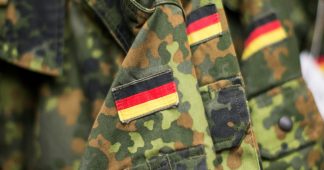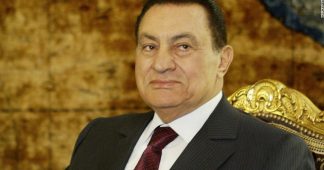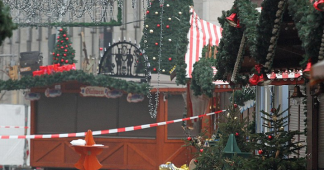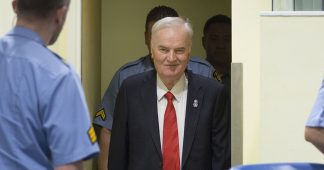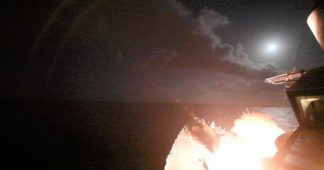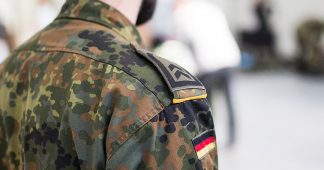By Sybille Fuchs and Dietmar Henning
13 August 2018
The district court of Düsseldorf, Germany, has acquitted Ralf S., the 52-year-old defendant on trial for the bombing attack on the Düsseldorf-Wehrhahn train station 18 years ago. Despite considerable evidence pointing to S. as the perpetrator, he walks out of court as a free man.
The ruling by presiding judge Rainer Drees will encourage free rein to neo-Nazis for their hatred of foreigners.
The avowed xenophobe and anti-Semite Ralf S., who at least 18 years ago was well-connected in the Düsseldorf neo-Nazi scene, was accused of remotely detonating a pipe bomb filled with TNT at the Wehrhahn S-Bahn station in Düsseldorf on July 27, 2000.
Seven women and three men sustained injuries which in some instances were life-threatening. A piece of shrapnel killed a pregnant woman’s unborn baby. The victims were mainly young Jewish men from Eastern Europe who studied German at a nearby language school. Many of the injured are still traumatized today. That the court acquitted Ralf S. was a great disappointment to them.
The state prosecutor’s office charged S. with 12 counts of attempted murder and compiled a compelling chain of evidence. Based on this evidence, chief prosecutor Ralf Herrenbrück considered S. guilty and announced he intended to appeal the ruling to the Federal Supreme Court. According to Herrenbrück, the defendant “overfulfilled” the criminal profile drawn up by experts.
S. was among the suspects from the beginning, but the case only got going in 2014, when S., in jail for failure to pay fines, bragged to a fellow inmate that he had carried out the attack. S. was finally arrested in February 2017.
The 44-year-old fellow inmate testified in court that S. had bragged to him about the bombing attack. His exact words were: “I blew up the Kanaken in my neighbourhood.”
During the trial, the former neo-Nazi Holger P. also appeared as a witness. S. had also bragged to him about the crime while in detention pending trial, because he had taken P. for a kindred spirit. S. confessed to him that he had carried out the attack. “The thing didn’t go like he expected, because he wanted everybody there to die,” Holger P. said of the conversation.
But there was still a baby killed, responded P., according to his own statement. S. is said to have answered that one could call it a “successful euthanasia.” S. saw himself as a hero. “As a soldier for Germany who had to save the honour of his country,” P. testified.
From the beginning of the trial, the judge adopted a line sympathetic to the defence. Whether or not S. was the perpetrator was essentially still an open question, and the evidence did not prove his commission of the crime. Drees had already taken this view months earlier. In mid-May he released the defendant from pre-trial detention because there was supposedly not enough suspicion against him.
Judge Drees acknowledged that S. was today, just as he was 18 years earlier, an extreme “misanthrope and xenophobe.” During the trial, intercepted telephone conversations of the defendant were quoted, in which he spoke of “Kanaken,” “drug dealing packs of filth” as well as “blacks, that someone would have to pick off with a 357 Magnum.”
But the judge was instrumental in arriving at the present outcome of an acquittal on the principle of “in doubt, for the accused.” He either did not believe witnesses from the beginning because they were “mentally unstable” like Holger P., or he interrogated them for so long—like the fellow inmate from 2014—that they began to contradict themselves.
The Süddeutsche Zeitung wrote of the judge’s questioning of Holger P.: “In moments like these, one could almost believe a defence attorney had posed these questions.”
The judge gave no more credence to the testimony by S.’s former girlfriend that she had seen the bomb in an additional apartment he rented four to five days before the attack, than he did to her testimony that S. had announced the attack around a year before. “I’ll blow them up,” he once said.
The judge played down contradictions in the testimony of S. and even his self-incrimination. S. was a man who had a strong tendency to show off, who “lied incessantly” to his fellow inmates.
The police had overheard S. say: “When you look at it that way, what I did at Wehrhahn was just an abortion—ah, what I could have done.” The judge interpreted the last half-sentence in favour of the defendant.
When he told his former wife that their children were the three great fortunes of his life, “and if you add the Wehrhahn thing, it’s four,” it could have just been irony from the judge’s point of view. There was ultimately a restraining order imposed on the father.
The prosecution introduced as important evidence against S. that he was identified by witnesses as the man who sat on an electrical junction box during the explosion and after the explosion slowly walked away instead of caring for the victims. A facial composite of the man was created with the help of one witness.
His companion at the time identified S. from this sketch without any doubts. Chief prosecutor Herrenbrück declared, if one superimposed this sketch and the photo from S.’s identification card, one could see it was the same person.
The court, however, maintained that S. made a phone call from his apartment just a few minutes after the crime. He could not, therefore, have been the man from the facial composite sketch. S. lived close by the scene of the attack.
The coincidences are endless, commented Herrenbrück. “This mystery man must have looked and dressed like the defendant. That doesn’t exist.” Herrenbrück made the serious accusation against the court that the chamber had let itself be deceived.
Accessory prosecutor Juri Rogner warned in his summation that the chamber about to “commit the worst judicial mistake in the history of Düsseldorf.”
Whether Judge Drees was “deceived” or has committed the “worst judicial mistake” is uncertain. The Wehrhahn trial is reminiscent of the recently concluded NSU trial. In that case, the federal prosecutor’s office declared there was “at no time a network,” only “a singular association of three persons,” though it was obvious that these three people were active in a close-knit network of neo-Nazis and informants for the state. In the Wehrhahn trial, Judge Drees determined early on that the defendant was a habitual liar and rejected him as a “source of knowledge.”
The result, as in the NSU trial, is that the defendants come away with lenient sentences or are acquitted and important questions are ignored. In the Wehrhahn trial, the question is once again left open as to whether the state intelligence services were involved.
According to the 1999 Report on the Protection of the Constitution, “well-established right-wing extremist structures” had taken root in Düsseldorf. The secret service closely monitored the Düsseldorf neo-Nazi scene, in which Ralf S. was firmly entrenched.
His statements about the North Rhine-Westphalian secret service are therefore highly suspicious. Ralf S. claims their V-Leute, or confidential informants, wanted to lure him into a trap after the attack. One of them allegedly provided him with 1,200 marks for one year—why? Another encouraged him to experiment with explosive materials. He did not provide further details about these incidents.
Dominik Schumacher of Mobile Counselling against Right-wing Extremism, who followed the entire trial, said after the verdict: “For example, there was a V-Mann active in the immediate vicinity of the defendant.” He was speaking of the former skinhead André M.
This V-Mann for the secret service, whose code name was “Apollo,” worked as a security guard for S. in the summer of 2000. When he was questioned again in 2016, he could not provide any information on the Wehrhahn attack. “In our experience, that is not credible,” said Schumacher. “A possible connection to the NSU played no role at all here. If there is a connection—the question remains.”
